
Get A Free Quote
Asthma will affect 339 million people in 2023. It was discovered that people were particularly afraid of contracting the COVID-19 virus because it would exacerbate their anxiety. Let us become better informed and lessen the unnecessary stress that prevents us from enjoying daily life. Say "yes" the next time your friends ask you to go hiking. Stop letting asthma prevent you from experiencing the world.
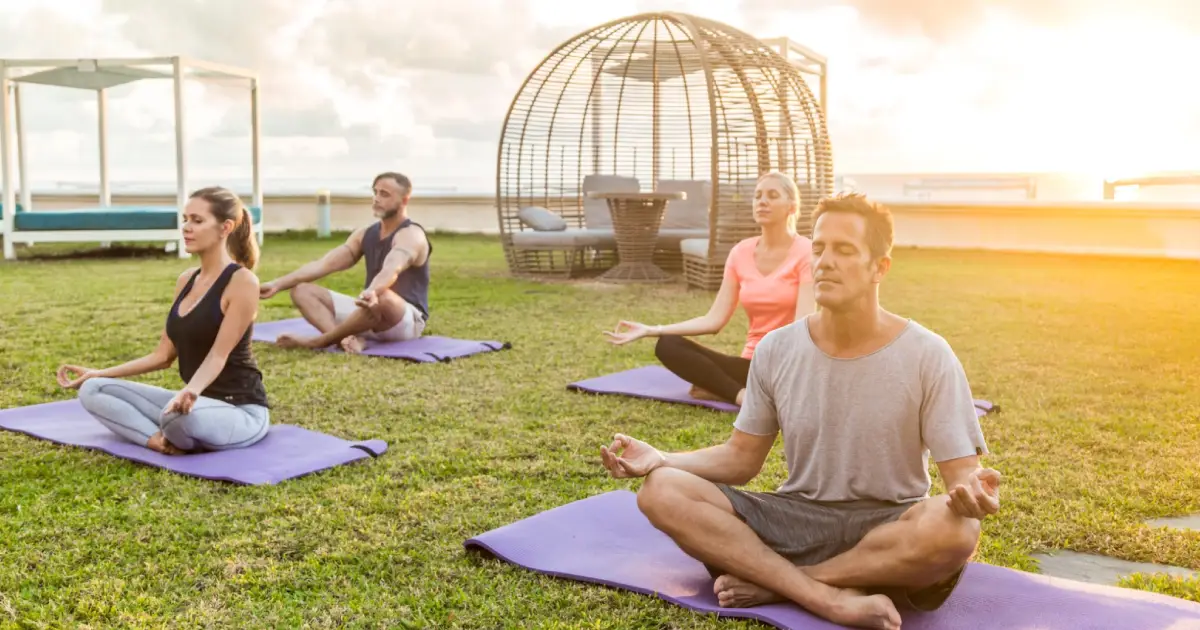
Asthma is a chronic lung disease that inflames and narrows the airways. This can cause wheezing, shortness of breath, chest tightness, and coughing. Asthma attacks can be mild to severe, and in some cases, they can be life-threatening.
Yoga is a mind-body practice that combines physical postures, breathing exercises, and meditation. Yoga is a helpful complementary therapy for asthma.
Some of the benefits of yoga for asthma include:
A holistic approach to managing asthma considers all of the factors that may contribute to the condition, including physical, mental, and emotional factors. This approach may include a combination of conventional and complementary therapies. It is important to talk to your doctor before starting any new treatment for asthma, including yoga. Yoga can be a safe and effective complementary therapy for asthma, but it is important to find a qualified instructor who has experience teaching yoga to people with asthma.
Yoga can be really helpful for people dealing with asthma. It does this by making you more aware of your breath and body, slowing down your breathing rate, and creating a sense of calm, which can be a big deal because stress often triggers asthma. Although there isn't concrete evidence that yoga can completely control asthma symptoms, studies have suggested it can improve how you control your breathing and manage stress, both of which are crucial for asthma management.
Regular yoga can gradually build up these benefits, giving you better control when you feel an asthma attack coming on. It's like conditioning the muscles you use to breathe so they don't get all tense during an attack. Plus, there are extra perks like increased flexibility, balance, and mobility. Just remember to start at your own pace and don't push yourself too hard in yoga to avoid any discomfort or injury.
Yoga, including practices like pranayama for breath control, can do wonders for your lungs. It helps improve lung capacity and how efficiently you breathe by engaging your respiratory muscles. Plus, it's a great stress-buster, and since stress often triggers respiratory problems, that's a win-win.
Yoga also boosts oxygen circulation throughout your body, making your lungs work more efficiently. People with conditions like asthma might find yoga calming and experience fewer symptoms, giving them more energy. It's not a replacement for traditional treatments, but it's a fantastic complementary therapy that takes a holistic approach to respiratory health. So, if you're dealing with respiratory issues, consider adding yoga to your wellness routine!
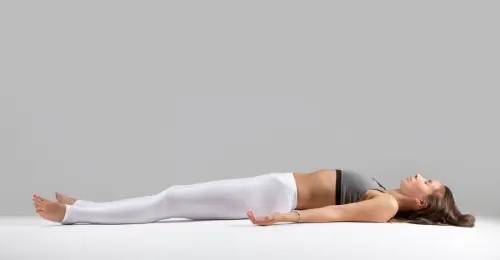
Savasana, also known as the Corpse Pose, involves lying flat on your back with arms at your sides and focusing on slow, deep breathing. It promotes relaxation, reduces stress, and helps with asthma by calming the mind and improving breath control.

Sukhasana, or the Easy Pose, is a seated position with legs crossed. It encourages deep, even breathing and stress control by placing hands on the heart and belly while maintaining good posture. This pose can assist in asthma relief by promoting breath awareness and relaxation.
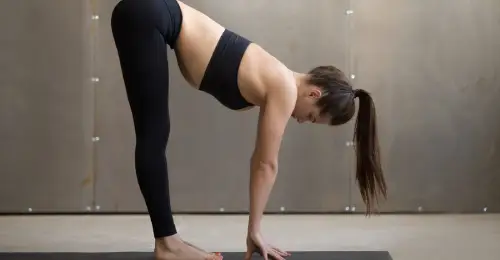
Uttanasana, or the Forward Bend Pose, involves standing with feet hip-width apart, folding the body forward, and letting the arms hang. This stretch can help open the chest, ease breathing, and induce calmness, benefiting individuals with asthma.
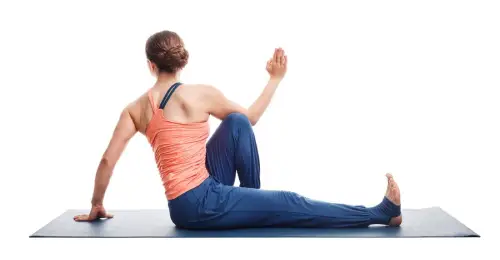
This pose is done seated or lying down, where you gently twist your torso while focusing on slow breathing. It targets the torso, back, and respiratory muscles, promoting calmness and relaxation that can be beneficial for asthma management.

Trikonasana, or the Triangle Pose, entails standing with feet apart, bending to the side, and stretching the upper body. It opens up the sides of the body and lungs, potentially improving respiratory function and providing asthma relief.

Bhujangasana, known as the Cobra Pose, is done by lying on your front, lifting your chest, and gazing forward. It stretches chest and neck muscles, aiding in asthma by enhancing chest mobility and helping with breath control.

Before beginning a yoga routine, it's essential to consult with your healthcare provider, especially if you have severe or poorly controlled asthma. They can offer personalized guidance based on your specific condition.
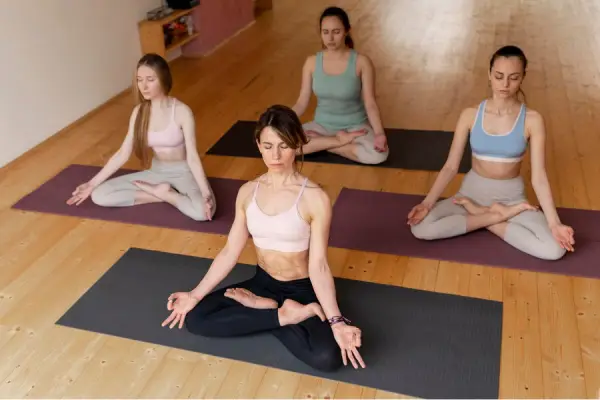
Opt for gentle and beginner-friendly yoga styles like Hatha or restorative yoga. These styles prioritize slow movements and breath control, reducing the risk of triggering asthma symptoms.

Inform your yoga instructor about your asthma, including your triggers and any specific concerns. An experienced instructor can adapt poses and provide safe guidance.
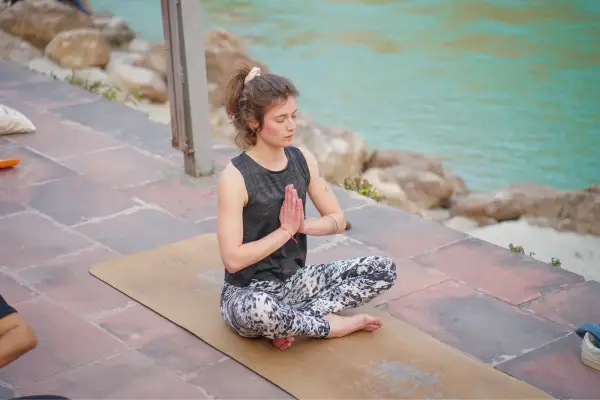
Make sure your practice space is well-ventilated to minimize exposure to potential allergens or irritants that might worsen asthma symptoms.

Yoga places a strong emphasis on controlling your breath through techniques like pranayama. Collaborate with your instructor to practice these methods safely, avoiding overexertion.
Consistency is key in the treatment of asthma through yoga. Start gradually, especially if you're new to yoga, and advance slowly. Avoid pushing yourself too hard, as this can trigger asthma symptoms. Listen to your body and progress at your own pace.
Duration: A 100-hour program is a relatively short training designed for individuals who want to deepen their yoga practice, gain foundational knowledge, and possibly teach basic classes.
Purpose: The goal of a 100-hour program is typically to help students develop their individual practices, gain a fundamental knowledge of yoga philosophy and techniques, and possibly work as assistants to more seasoned teachers. For those with a limited amount of time or who want to begin their journey gradually, it can be a fantastic option.
Syllabus:
Duration: A 200-hour program is the most common and widely recognized level of yoga teacher training. It is suitable for those who want to become certified yoga instructors.
Purpose: The goal of a 200-hour program is to become a certified yoga instructor recognized by Yoga Alliance, a well-known organization in the yoga community. It is appropriate for those who want to teach yoga professionally or significantly deepen their understanding.
Syllabus:
Duration: A 300-hour program is designed for individuals who have completed a 200-hour training and want to deepen their knowledge and teaching skills.
Purpose: A 300-hour program is an advanced level of training meant for certified yoga instructors who want to enhance their teaching skills, specialize in a particular style of yoga (e.g., vinyasa, yin, prenatal), or delve deeper into advanced yoga philosophy and techniques.
Syllabus:
Inhaling steam from a bowl of hot water can help relieve congestion and open up the airways during mild asthma symptoms.
Gargling with warm salt water can soothe a sore throat or irritation caused by coughing during asthma attacks.
Some individuals find relief from asthma symptoms through herbal remedies like ginger tea, licorice root tea, or herbal inhalation treatments. However, it is important to speak with a naturopath or herbalist first before attempting these treatments.
By giving you a thorough understanding of yoga, a 200-hour Yoga Teacher Training Course can significantly enhance your asthma management.
Gain a deep understanding of yoga, including breath control and posture mechanics, vital for effective asthma management.
Learn and practice yoga asanas and breathing techniques correctly to maximize therapeutic benefits and minimize asthma risks.
Learn about yoga's additional physiological and psychological advantages, including how it can improve asthma control by reducing stress and improving lung function and mental health.
Earning certification enhances trustworthiness if you teach yoga for asthma relief, showing dedication and expertise.
Joining a yoga community offers support, motivation, and resources, benefiting your asthma management journey.
Learn to tailor yoga routines to individual asthma needs, adapting poses and practices to specific triggers and severity levels.
It's worth noting that yoga has the potential to be a helpful complementary therapy for asthma management. However, it's important to remember that everyone's asthma management plan should be personalized and comprehensive to meet their unique needs. It's crucial to consult with healthcare professionals to develop a safe and effective asthma management plan. With the right guidance and approach, individuals can use yoga to improve their overall asthma management.

Posted: 05 October, 2023
Renowned for his expertise in yoga and its philosophy, Sajan Negi brings over 15 years of experience in guiding individuals on their transformative journey towards holistic well-being. With a Master’s degree in Yoga and a life dedicated to personal growth, Sajan Negi combines ancient wisdom with modern insights to inspire physical strength, mental clarity, and spiritual peace in his students.